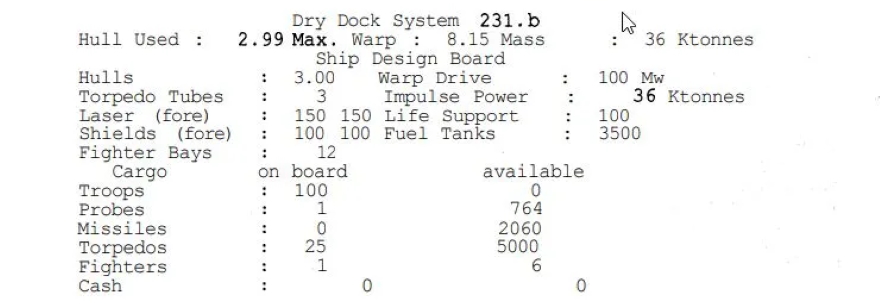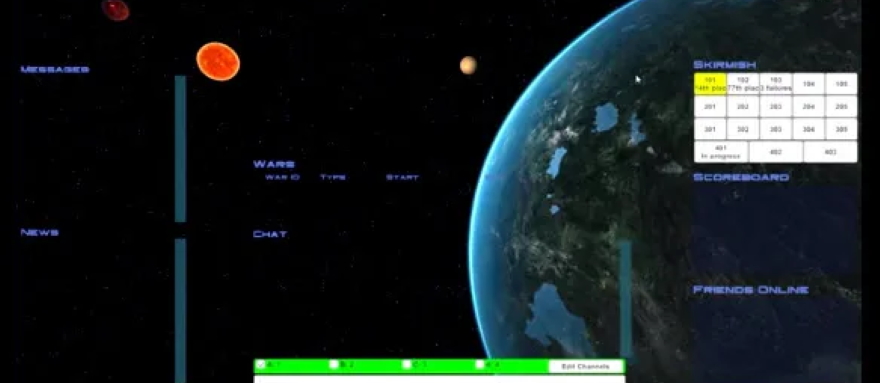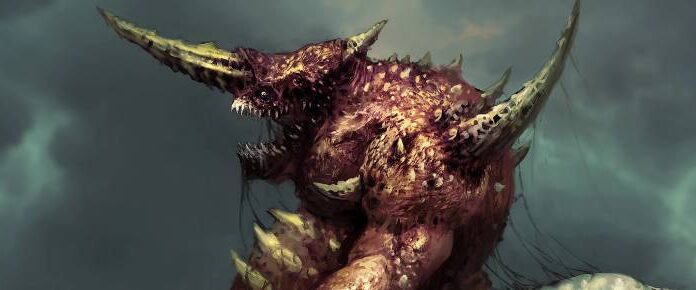
When we look at the early days of online computer gaming, it shouldn’t be a surprise that the geeky crowd that was working on these titles were also enamored with geeky shows like Star Trek. In fact, somewhen in the mid-1970s, an unknown author wrote the code for a Star Trek sim called WAR that was meant to be played on the University of Texas at Austin’s supercomputer, the CDC-6600.
WAR put two players in command of a starship that would cruise around the galaxy trying to destroy Klingon warships and conquering planets to turn them friendly. If a player either acquired all of the planets or destroyed his opponent’s ship, that player would win. The two players had to take turns using the same computer terminal to enter commands, making it quite awkward but workable.
This simplistic space sim was soon ported to the DEC PDP-10 by Robert Schneider in August of 1978. Now called DECWAR, the Star Trek sim boasted rewritten code, a Romulan ship, and new features. Perhaps the most notable change was the addition of true online multiplayer. Up to 18 players could join a game and duke it out among the stars — provided that each had access to the hardware and software required.
“By using shared memory to store information about the galaxy, each player was able to run a different copy of the program (or job) and still share a single map,” Games of Fame wrote. “That allowed them to join or leave the game at any time without interrupting the rest of the players.”
DECWAR was a modest hit among university students and other tech users, and the title quickly spread around the globe. New and improved versions of the title emerged in subsequent years into the early ’80s.
What DECWAR didn’t have, however, was a copyright that forbade users from taking the game and repackaging it for various platforms. Bill Louden at CompuServe, an online platform, saw the potential in DECWAR, bought a copy for $50, and went to work. His team rewrote the game to strip out the Star Trek references (because: legal), add leaderboards, include more ship types, and rebrand it. The new name? MegaWars.
Already tried-and-true in its older form, MegaWars was a solid hit for CompuServe when it went live in 1983. Any player with a computer and modem could engage in interstellar warfare as long as they were paying CompuServe for the privilege.
It wasn’t the most user- or budget-friendly title. As The Digital Antiquarian explains, “Playing it was a daunting proposition: It usually required about two to three hours — meaning as much as $20 in connection fees — to finish a complete match, and the player had to learn 32 separate textual commands which had to be typed in real time as the galaxy exploded in battle all around her.”
Even so, the original MegaWars proved to be so enduring that it ran on the platform for almost its entire existence, only ending its run in 1998. Players formed proto-guilds that would log into the game with names that revolved around a theme of some sort.
A sequel, MegaWars II, was soon commissioned with the intent of making it a lot more home computer friendly and introducing color monitor support. But this project was eclipsed by a third version, MegaWars III, which spliced in ideas from another title (1979’s S, designed by Kesmai’s Kelton Flinn and John Taylor). This game actually made it to market first and effectively scrapped the MegaWars II.
“We dusted off an old coffee-stained printout of S,” recalled Flinn. “We recoded the game in CompuServe’s BASIC, enhanced the game some, incorporated some ideas Bill had, and rolled out MegaWars III in December 1983. It was an instant hit and stole a lot of MegaWars I’s thunder.”
Now in the fourth major generation, this space sim became a true massively multiplayer 4X title. It was no longer limited to just a couple of ships trying to convert planets and pick of Klingon Birds of Prey. Now, players would sign up for month-long campaigns during which they would wage war with up to 100 concurrent players squabbling over 1,000 systems. MegaWars III proved to be even more popular and enduring than its predecessor, lasting from 1984 to 1999.
“If Island of Kesmai foretold the fantasy side of the MMORPG genre, then MegaWars III was very much a hint as to what the future might bring when it came to internet spaceships in EVE Online,” wrote The Ancient Gaming Noob.
At the start of a campaign, players would jump into light scout ships and try to find a star system to colonize. As they claimed planets, players could then build up resources to create new ships and weapons, which then went to fuel the galactic war effort between the teams. When the campaign concluded at the end of 30 days, the leaderboard would award the highest point earner the title of Emperor. The periodic reset of the game “kept newbies from feeling they had no way to catch up and were just meat for the slaughter,” said Loudin.
Meanwhile, Kesmai abandoned CompuServe in favor of signing up with GEnie, a rival online service. In this transition, the studio brought over many versions of games that it had created or worked on, including MegaWars III. The GEnie versions, however, became known as Stellar Emperor and Stellar Warrior.
“For most of the balance of the 1980s MegaWars III and Stellar Emperor ran along as identical twins,” noted Ancient Gaming Noob. “As the ’90s approached, GEnie and Kesmai began to work on improving Stellar Emperor, giving it a GUI eventually, while MegaWars III remained as it was. If you played them both after 1989 or so, you’ll probably say they were different, but before then they were essentially identical.”
While the official run of these original games came to an end at the turn of the century, they continued to endure through “rebirth” projects and other emulators. It’s wild to think that players even today are having fun playing descendants of a game that was created during Richard Nixon’s presidency.
 Believe it or not, MMOs did exist prior to 2004! Every two weeks, The Game Archaeologist looks back at classic online games and their history to learn a thing or two about where the industry came from… and where it might be heading.
Believe it or not, MMOs did exist prior to 2004! Every two weeks, The Game Archaeologist looks back at classic online games and their history to learn a thing or two about where the industry came from… and where it might be heading.
















